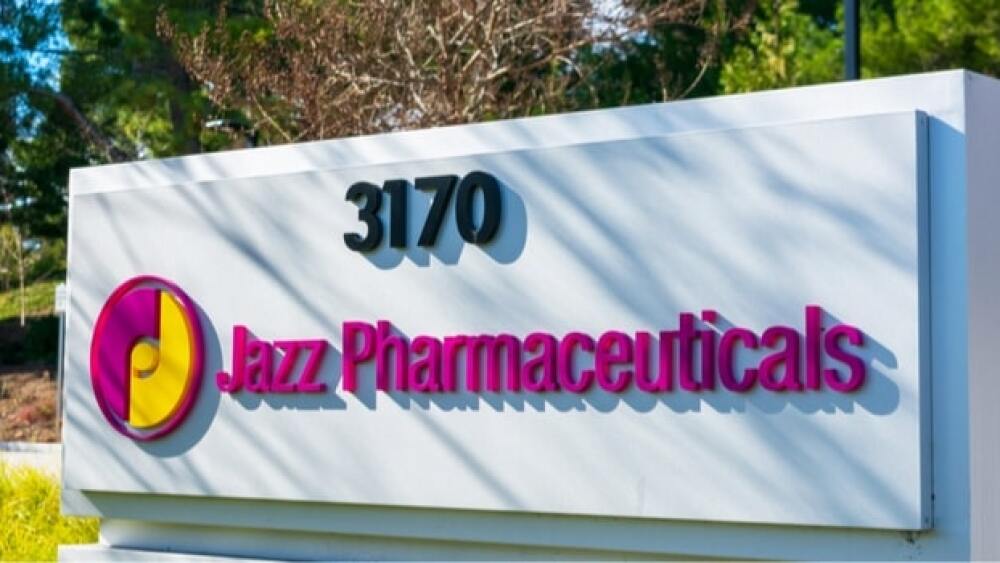Jazz’s Q1 included a key licensing deal with Werewolf Therapeutics and another announced Wednesday with Japan’s Sumitomo Pharma Co. for a narcolepsy treatment.
Michael Vi/Shutterstock
For Jazz Pharmaceuticals, 2022 is off to a roaring start, building on its Vision 2025 plan announced earlier this year that includes a key licensing deal with Werewolf Therapeutics and another announced Wednesday with Japan’s Sumitomo Pharma Co. for a narcolepsy treatment. With its focus on neuroscience and oncology, the company is on a clear path to hitting its goal of achieving $5 billion in annual revenue by 2025.
In a late-afternoon conference call, Jazz Chief Executive Officer Bruce Cozadd said the leadership team is extremely pleased with the company’s direction since announcing the Vision 2025 plan. “In short, we’re really pleased with where the business is and where the business is going,” Cozadd told journalists and analysts on the call as the company highlighted its first quarter financial results.
For Q1, Jazz Pharma saw total revenue of $813.7 million, an increase of 34% compared to the same period of time in 2021. Those sales were powered by $612.1 million in neuroscience, driven by sales of epilepsy drug Epidiolex and $433.6 million from Xywav, a low-sodium treatment option for both cataplexy and excessive daytime sleepiness in people living with narcolepsy. Cozadd said the company has been extremely encouraged by the ongoing launch of Xywav and has seen an increase in prescribers turning to the medication. The growth potential for Xywav is expected to be about $2 billion in annual revenue.
In addition to Xywav, Cozadd pointed to the ongoing success with Rylaze, a leukemia drug approved by the U.S. Food and Drug Administration last year. Rylaze was approved for patients who have developed hypersensitivity to E. coli-derived asparaginase, an enzyme that is a common component of the chemotherapy regimen used for leukemia patients. Currently, the medication requires dosing every 48 hours but earlier this year, Jazz submitted a supplemental Biological License Application that would allow dosing on a Monday, Wednesday, Friday intramuscular dosing schedule, as well as an sBLA for intravenous administration. Both sBLAs are being reviewed by the FDA under the Real-Time Oncology Review (RTOR) program.
Additionally, the company in-licensed two assets that Robert Iannone, global head of research and development at Jazz, said offer the company exciting possibilities in areas of core interest. The first asset, brought in from Werewolf, is an engineered IFN⍺2b cytokine pro-drug that gave Jazz its first immuno-oncology program. Now known as JZP898, the compound has demonstrated anti-tumor activity in preclinical models and Iannone suggested in a previous interview that it has the potential to complement a number of currently utilized oncology treatments.
The other newly-licensed asset is Sumitomo’s DSP-0187, a potent and highly selective oral orexin-2 receptor agonist, now known as JZP441. Iannone said the experimental therapeutic has potential applications for the treatment of narcolepsy, idiopathic hypersomnia and other sleep disorders, which “further strengthens our leadership in sleep medicine.”
Cozadd added that the licensing agreements expand the company’s pipeline in core therapeutic areas and remain consistent with its strategy.
“Our three recent transactions are aligned with our broader strategy, allowing us to focus on our highest priorities, enhance our pipeline in areas of key interest in neuroscience and oncology and drive long-term shareholder value,” he said.
Another key move for Jazz this quarter was the divestiture of narcolepsy drug Sunosi to Axsome Therapeutics in March. The company sold the medication for $53 million in upfront payments plus royalties. Cozadd said the move was strategic, allows increased investment opportunities and sharpens the company’s focus on the highest strategic priorities.
On the oncology side of the house, Zepzelca (lurbinectedin), which has been approved for the treatment of small cell lung cancer, generated $59 million for the quarter, a 9% increase. Jazz said it is pleased that Zepzelca has become the “treatment of choice” in the second line for SCLC only 18 months after it was approved by the FDA. Earlier this year, Jazz enrolled the first patient in its EMERGE 201 study, which will assess Zepzelca as a monotherapy in various solid tumors. Jazz hopes that Zepzelca, an alkylating drug that binds guanine residues within DNA, will prove to be safe and effective in different solid tumor types, including urothelial carcinoma, large cell neuroendocrine carcinoma of the lung and homologous recombination deficient tumors.
Looking ahead, Jazz is anticipating data from a Phase III study of nabiximols in multiple sclerosis later this year that could lead to a New Drug Application by the end of 2022.





